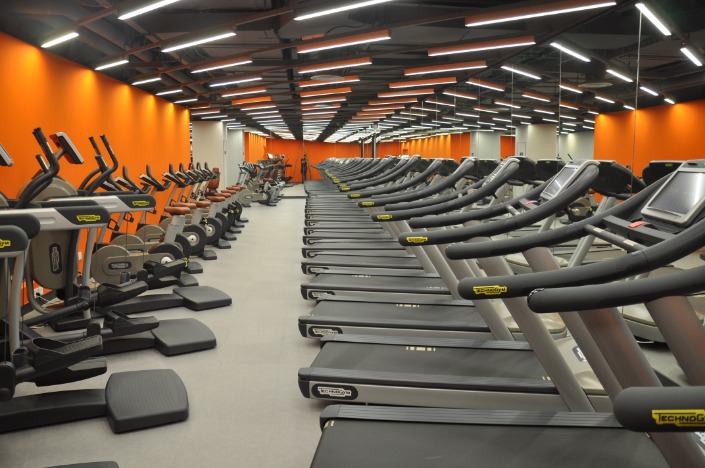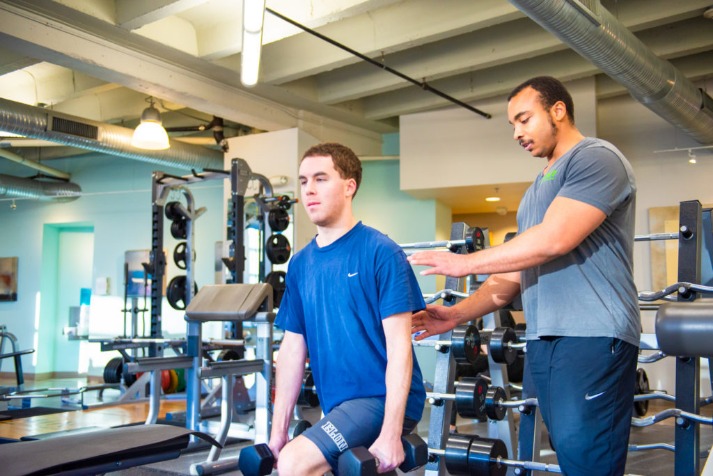Foundations First: Principles That Turn Goals into Results
Most transformation stories begin with a promise of quick fixes, but sustainable progress starts with a framework that respects physiology, psychology, and lifestyle. A results-driven coach prioritizes foundational strength, movement quality, and scalable habits that match real life. The aim is simple: build capacity you can actually use. That means training patterns before muscles, teaching the body to keep joints stacked, and keeping the nervous system fresh enough to adapt. The process aligns effort with outcomes so you stay motivated and see meaningful changes in performance, body composition, and energy.
Movement quality anchors everything. Hip hinges, squats, pushes, pulls, carries, and rotation form the backbone of any intelligent workout plan. By assessing these patterns—range of motion, symmetry, tempo control, and stability—work blocks evolve from corrective drills into strong lifts. Instead of chasing soreness, programming focuses on tension where it matters, clean rep execution, and appropriate volume. This reduces injury risk while improving strength expression, which is vital for long-term fitness. When the basics look and feel solid, intensity becomes a powerful ally.
Progressive overload is kept honest with autoregulation. Rather than forcing numbers, sets and reps adapt to daily readiness using RPE (Rate of Perceived Exertion) or Reps in Reserve. This ensures you train hard on good days and manage fatigue on tougher ones. Recovery isn’t an afterthought; it’s baked into the plan with coordinated sleep targets, hydration, protein minimums, and daily movement thresholds. Even short mobility “micro-doses”—five minutes of hips, T-spine, and ankles—compound over weeks into better positions and stronger lifts.
Behavior design glues it all together. Habit stacking, friction reduction (for example, laying out gear the night before), and calendar-based accountability keep consistency high without relying on willpower alone. A skilled coach turns complex science into repeatable routines: a warm-up you can do anywhere, strength supersets that fit busy schedules, and conditioning that improves health markers without draining you. The result is a system that scales from beginner to advanced, prioritizing longevity, metabolic health, and confidence in your body.
Programming That Works: From Mobility to Power in Every Workout
Effective training is more than a random collection of exercises; it’s a sequence designed to deliver the right adaptation at the right time. Each session begins with a MAP warm-up—Mobility, Activation, Prime. Mobility unlocks joint range; activation lights up stabilizers like glutes and mid-back; priming rehearses the main pattern with tempo and intent. This approach turns the first 10 minutes into an investment that pays off in strength, control, and injury resilience throughout the workout.
Strength blocks emphasize patterns: hinge, squat, horizontal push/pull, vertical push/pull, carry, and anti-rotation. For general fitness, a 2-3 day full-body split works brilliantly: Day A (hinge + horizontal push), Day B (squat + pull), Day C (carry/rotation + vertical push). Each primary lift gets 3–5 sets of 4–8 reps at an RPE 7–9, followed by accessory work to shore up weak links—hamstrings, upper back, calves, and core. Tempo control (like 3-second eccentrics) builds connective tissue strength and mind-muscle connection. Supersets pair non-competing patterns to maximize density without compromising technique.
Conditioning targets the aerobic base first. Zone 2 efforts—steady work where breathing is conversational—improve mitochondrial density, stress tolerance, and recovery between sets. One or two weekly intervals sharpen performance: 6–10 rounds of 30 seconds fast, 90 seconds easy, staying sub-maximal to keep form crisp. Later in a training block, alactic sprints or short hill repeats can be layered in to build power without excessive fatigue. This structured approach keeps energy systems balanced, so you can train hard and still feel great the next day.
Weekly structure matters. A practical template: three full-body lifts, one optional accessory day (calves, arms, core, mobility), two aerobic sessions (one can be a brisk hike or bike), and one true rest day. The accessory day doubles as “movement therapy” to address posture and joint health. Lifters track progress using a simple matrix: load, reps, RPE, and movement quality notes. Deloads every 4–6 weeks reset fatigue and consolidate gains. Nutrition syncs with training: prioritize protein at 0.7–1.0g per pound of goal bodyweight, anchor carbs around sessions, and keep hydration steady with electrolytes, especially during warmer months.
For busy professionals, strategic constraints maintain momentum. Set a 45-minute cap, use EMOM or density blocks for accessories, and base rest periods on breath recovery (for example, start your next set when nasal breathing is easy). Warm-ups can be pared to one mobility drill, one activation drill, and one primer set. A strong coach uses these constraints creatively, ensuring every session moves you forward—even when time is tight. Over months, this spartan consistency compounds into visible strength, better posture, and a calmer nervous system.
Real-World Results: Case Studies and Coaching Tactics by Alfie Robertson
Translating strategy into outcomes requires clear metrics, realistic timelines, and relentless consistency. Working with Alfie Robertson demonstrates how systems beat motivation—and why thoughtful coaching can reshape a routine, a physique, and a mindset.
Case Study 1: The Desk-Bound Professional. Jamal, 38, had chronic low-back tightness, afternoon slumps, and a stalled bench press. The initial audit revealed limited hip extension, weak glute activation, and erratic sleep. The plan started with a hinge rebuild: tempo Romanian deadlifts, suitcase carries, and 90/90 breathing to decompress the spine. Strength work ran three days per week; Zone 2 walks were stacked onto lunch breaks. Within 12 weeks, Jamal reduced waist circumference by 7 cm, improved resting heart rate from 72 to 60 bpm, and added 15 kg to his bench while eliminating nagging back pain. The key was not maximal effort daily—it was consistent, technically clean reps and progressive loading that respected recovery.
Case Study 2: The Time-Crunched Parent. Mia, 33, had 30-minute windows and a goal to regain strength post-pregnancy. Sessions were built around density circuits: goblet squats, half-kneeling presses, TRX rows, and farmer’s carries. Each block included one mobility drill and one posture corrector (for example, wall slides). Protein anchors were set at breakfast and post-workout, with quick options like Greek yogurt, eggs, and pre-cooked chicken. Over 16 weeks, Mia’s trap-bar deadlift progressed from 40 kg to 90 kg for triples, knee pain resolved, and daily steps rose from 4,000 to 8,000. The win wasn’t just in the numbers—it was the return of confidence and the energy to keep up with a toddler.
Case Study 3: The Hybrid Runner-Lifter. Hannah, 29, wanted a faster 10K without losing muscle. Many plans overemphasize mileage and erode power. The approach blended two strength days (heavy hinge + squat focus) with two runs: one long Zone 2, one threshold session. Accessory work strengthened hip stabilizers and feet, while plyometrics before heavy lifts preserved rate of force development. Nutrition cycled carbs around run days and increased sodium to support longer efforts. The result: a 10K PR from 49:30 to 45:10 in 10 weeks, vertical jump up 3 cm, and zero overuse injuries. Preserving power while improving endurance created a more robust, faster athlete.
Across cases, the playbook shares common threads. Assess patterns, not just muscles. Warm up with intent, build strength with perfect reps, and let conditioning support rather than sabotage progress. Keep volume appropriate, and use deloads proactively. Track a handful of metrics: waist and hip measurements, two performance KPIs (like a 3-rep deadlift and 1K row time), sleep duration, and weekly step count. When a number stalls, adjust one variable—load, frequency, or recovery—then reassess. This steady calibration keeps momentum without burnout.
Coaching tactics make the difference between good plans and great results. Habit stacking turns daily friction into flow: fill a water bottle while coffee brews, mobilize ankles during meetings, pack gym gear before bed. Checklist templates ensure no warm-up step gets skipped. RPE education builds autonomy, empowering you to train intelligently when life gets messy. Mini “mobility snacks” after long drives reset posture before lifting. On the mindset front, identity shifts matter: think “I’m the kind of person who trains three times per week” rather than “I’ll try to hit three sessions.” This subtle change encourages consistency and resilience.
As capacity grows, the program evolves. Beginners learn tempo control and bracing; intermediates layer in clusters, pauses, and contrast sets; advanced trainees rotate intensities across the week to modulate fatigue and drive progress. Regardless of level, emphasis remains on high-quality movements, aerobic base building, and sustainable nutrition. This is the art and science of coaching—turning complex physiology into simple, repeatable actions that move the needle. Under a sharp coach, the plan doesn’t just look good on paper; it delivers real-world performance, health, and confidence that lasts.




